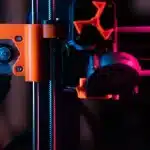When you turn the key in your ignition or press the start button, a silent yet powerful symphony begins under the hood of your car. This performance, directed by the car battery, is critical, yet often overlooked until something goes wrong. Let’s dive deep into the inner workings of car power systems, unraveling the complexity and essential nature of these unsung heroes.
Understanding the Heart of Your Car: The Car Battery
The car battery, a simple box encasing complex chemistry and electronics, is the lifeline of your vehicle. It’s not just about starting the engine. Think of it as the heart, pumping vital energy to all other electronic components from headlights to radios and everything in between. But what really goes on inside this box?
Car batteries primarily function through a chemical reaction that converts stored chemical energy into electrical energy. This process involves lead, lead dioxide, and a sulfuric acid solution which together facilitate an electron exchange. This exchange is what powers your car’s electrical systems. It’s a robust dance of electrons that begins every time you start your car.
When Car Batteries Call for Attention
Here’s an engaging anecdote about the word “call”. Picture a serene morning, you’re all set for work, and just when you attempt to start your car, nothing happens. That silence in the ignition is a call from your car battery, signaling that it might be time for a car battery replacement. Like any call, the urgency often depends on what’s at stake – in this case, your ability to get to work, drop kids at school, or keep an appointment.
Components of a Car Battery
Diving deeper, the car battery comprises several critical components:
1. The Casing: Typically robust and resistant to vibrations and minor impacts.
2. Plates: Lead and lead dioxide plates submerged in an electrolyte solution.
3. Electrolytes: A high-concentration sulfuric acid solution facilitating electron movement.
4. Connectors and Terminals: These ensure your battery’s stored energy is effectively transferred to the car’s electrical systems.
Each part has its role, working in harmony to ensure reliability and efficiency.
Car Battery Replacement: When and Why It Matters
Replacing a car battery isn’t something you do routinely, but understanding when and why to replace it can save you from unexpected troubles. Typical signs include slow engine crank, check engine light, or a swelling battery case. If you notice these signs, it might be time to consider a car battery replacement to ensure your car remains reliable when you need it most.
An Anecdote on Publication
Speaking of reliability and timely actions, here’s a lighter take involving the word “publication.” Imagine eagerly waiting for the release of a monthly automotive magazine that you subscribe to. The day it arrives, you find an article on the latest in car-batteries technology. This publication not only enlightens you but also arrives just as you’re considering a car battery replacement. It’s timely, informative, and fortuitously aligned with your immediate needs.
The Unsung Hero: Ensiform Connectors
While discussing key components, let’s not forget the ensiform connectors – named for their sword-like shape. These connectors are crucial as they bridge the battery to your car’s electrical system. Much like a sword in battle, these connectors must be strong, resilient, and precise. They might not be the most noticeable parts of a battery, but their role is pivotal.
Maintaining Your Car Battery
Maintenance is key to longevity. Regular checks and cleaning of terminals to prevent corrosion, ensuring the battery is securely mounted to minimize vibrations, and keeping track of the battery’s age are all part of good car battery health practices. Remember, a well-maintained battery is less likely to fail unexpectedly.
Why This All Matters to You
Why does knowing the intricacies of your car’s battery matter? Because knowledge empowers you. Understanding what goes on under the battery hood helps you make informed decisions about maintenance and replacements, ensuring that your daily commutes and long journeys are smooth and uninterrupted.
In essence, the life of your car depends significantly on the humble battery. By understanding its structure, function, and maintenance needs, you can ensure that your vehicle remains a reliable companion on the road. So, next time you hear the quiet click of your car engine starting, remember the intricate dance of chemistry and physics happening right under the hood, all made possible by your car’s battery.







